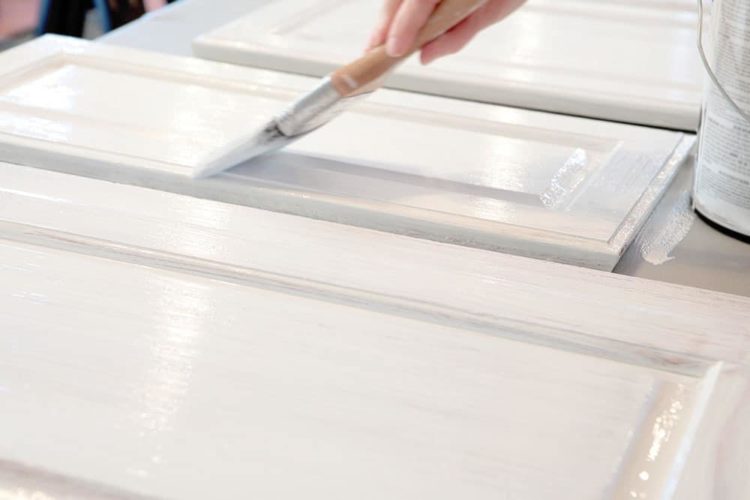By Allison Abbey, Loulou Rozek, and Maxwell Shumba, Borchers: A Milliken Brand
INTRODUCTION
Alkyd resins are oil-based polyesters created by reacting alcohol and acid, which can further be modified through the addition of unsaturated oils. These oils can vary in length and branching, which will create different coating properties, allowing for high diversity and tailoring for specific applications. Alkyds form a film by undergoing a crosslinking reaction in the presence of oxygen in the surrounding air at sites of unsaturation in the fatty acids. If unaided, this autooxidative process can be extremely slow.
The application of alkyds spans a multitude of different market segments, from architectural to industrial, and can be used on various substrates, including wood and metal. The versatility of these resins keeps them relevant in the coatings market as new chemistries are continually being developed. Since the original synthesis in the 1900s, alkyds have faced increasing regulations, driving developments of more sustainable alkyd chemistries.
It is well documented that the emission of potentially harmful VOCs has resulted in an increase in the number of health problems such as asthma, allergies, and other breathing problems as well as environmental concerns associated with global warming.
The health and environmental hazards related to these potentially harmful VOCs have prompted government agencies to enact stringent regulations. The increase in public awareness regarding environmental effects and health issues drives the demand for low-VOC paints and coatings, which has led to the development of low-solvent, solvent-free, and waterborne coatings. Low-VOC paints and coatings typically use water as a carrier instead of petroleum solvents. In some cases, specialized solvents, such as de-aromatized (aromatic content less than 1%) solvents, are used to reduce VOC content.
To comply with these increasing regulations, there are three paths that formulators can choose when working with alkyd coatings.
The first path is to increase the solids content, reducing VOCs in solventborne alkyd formulations. This is the most straightforward choice, as it typically requires a minimal amount of reformulation. Resin manufacturers can increase solids in two ways. Manufacturers can keep the same molecular weight and reduce solvent content. However, viscosity will increase, leading to potential differences in application performance and increased film thickness, resulting in wrinkling. To keep viscosity similar, manufacturers can decrease the molecular weight of the resin and solvent content, but this could negatively affect drying and performance properties.
The second path is to move from a pure solventborne alkyd to a water-reducible alkyd. Formulators often choose this path because of the similarity in paint application to high-VOC solventborne alkyds. Manufacturers can also continue to use the same industrial equipment, and the resin is easy to produce. Water-reducible alkyds are created by incorporating carboxylic-acid groups into the structure. These acid groups are then neutralized with amines to enable solubility in water. Although these types of alkyds are high in solids, 70–75% by weight, they still have relatively high levels of VOCs, primarily hydrophilic glycol ether solvents.
The third path is to use waterborne alkyd emulsions. This technology was engineered to have extremely low VOC levels that are significantly lower than water-reducible or high-solids solventborne alkyd coatings. Initially, waterborne alkyds did not have the same chemical resistance, ease of application, or shelf stability as solventborne alkyds. However, through years of development and adjustments, the properties of waterborne alkyds have become like that of solventborne alkyds. This is due in part to utilizing the correct additives in the full coating formulation to increase corrosion resistance, shelf stability, and other performance properties. This can be a difficult transition for coating manufacturers because nearly all materials and additives will need to change from what is traditionally used in high-VOC solventborne coating formulations.

All three options have pros and cons (Figure 1), as well as potential adverse consequences when the VOC level of a formulation is reduced. Longer dry times, reduced shelf life, wrinkling, and increased formulation complexity are common challenges formulators need to overcome with these technologies. By utilizing HPCs, formulators are achieving low-VOC targets while maintaining paint quality and meeting customer demands.
HPCs are a unique technology that can outperform typical metal carboxylates in oxidatively cured alkyd systems. They are patented organometallic ligand technologies (WO2012093250A1) that work differently from traditional metal driers. There are many environmental benefits such as being cobalt-free, APEO-free, and CMR-free materials. HPCs are also compliant with the European Union’s Registration, Evaluation, Authorization, and Restriction of Chemicals (REACH). These catalysts are globally registered and can be used in both solventborne and waterborne applications, making them highly versatile. This article will discuss one case study from each of the three low-VOC alkyd formulation paths that showcase the use of HPCs to overcome performance challenges.
